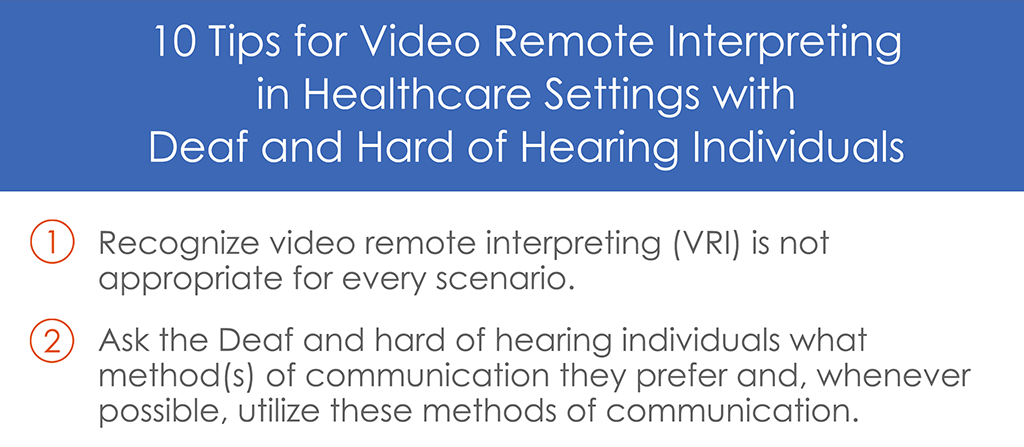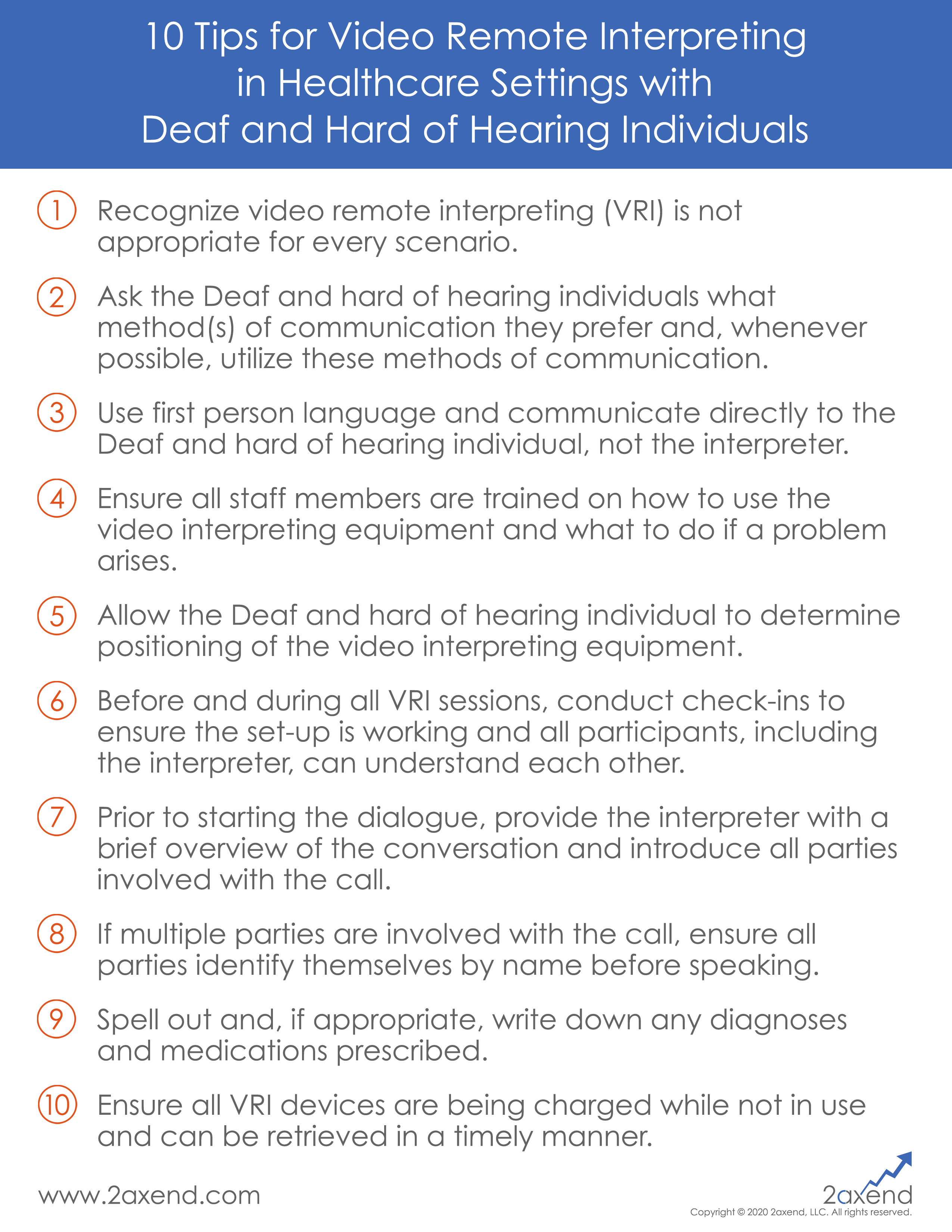10 Tips for Video Remote Interpreting in Healthcare Settings with Deaf and Hard of Hearing Individuals
We remain concerned about how the ongoing COVID-19 pandemic is impacting communication for members of the Deaf and hard of hearing community in various settings, including healthcare.
As more and more healthcare organizations are pivoting towards using Video Remote Interpreting (VRI) to minimize exposure to COVID-19, we created a list of tips for healthcare professionals to keep in mind when using VRI with Deaf and hard of hearing patients.
While these tips are not comprehensive, these can help ensure effective communication takes place when communicating with Deaf and hard of hearing individuals.
Click here to download a PDF version of the document with ten tips to consider.
—
Image Description: Document titled, “10 Tips for Video Remote Interpreting in Healthcare Settings with Deaf and Hard of Hearing Individuals.” The ten tips are as follows:
- Recognize video remote interpreting (VRI) is not appropriate for every scenario.
- Ask the Deaf and hard of hearing individuals what method(s) of communication they prefer and, whenever possible, utilize these methods of communication.
- Use first person language and communicate directly to the Deaf and hard of hearing individual, not the interpreter.
- Ensure all staff members are trained on how to use the video interpreting equipment and what to do if a problem arises.
- Allow the Deaf and hard of hearing individual to determine positioning of the video interpreting equipment.
- Before and during all VRI sessions, conduct check-ins to ensure the set-up is working and all participants, including the interpreter, can understand each other.
- Prior to starting the dialogue, provide the interpreter with a brief overview of the conversation and introduce all parties involved with the call.
- If multiple parties are involved with the call, ensure all parties identify themselves by name before speaking.
- Spell out and, if appropriate, write down any diagnoses and medications prescribed.
- Ensure all VRI devices are being charged while not in use and can be retrieved in a timely manner.
In the footer, www.2axend.com and the 2axend logo are displayed. Underneath the 2axend logo is “Copyright © 2020 2axend, LLC. All rights reserved.”


